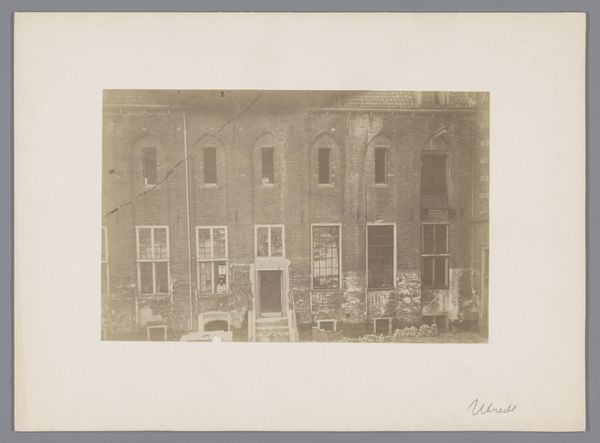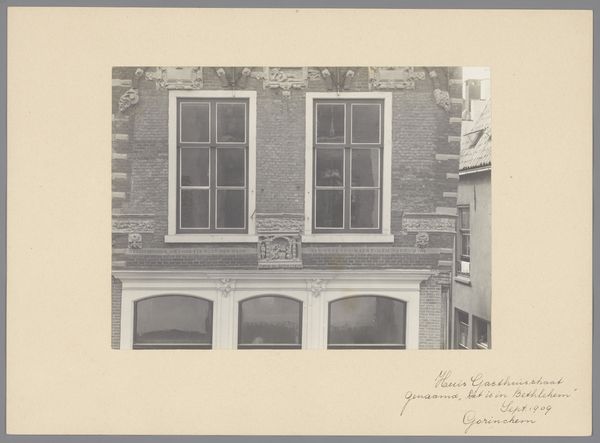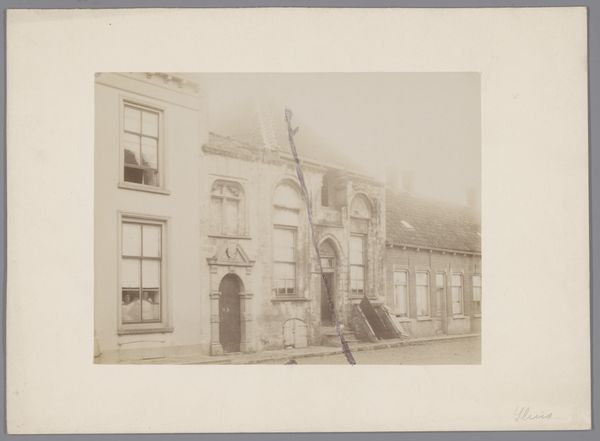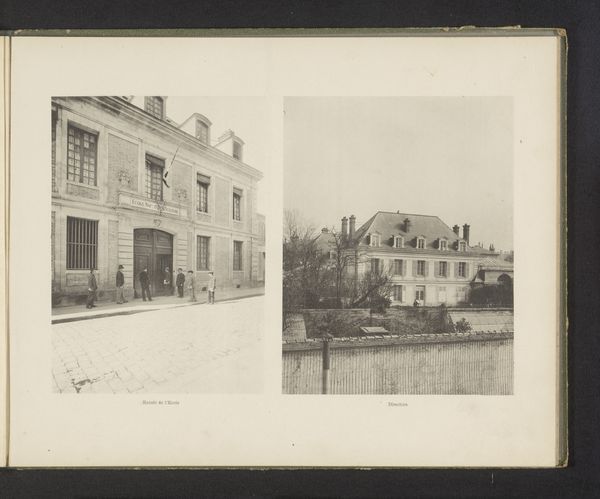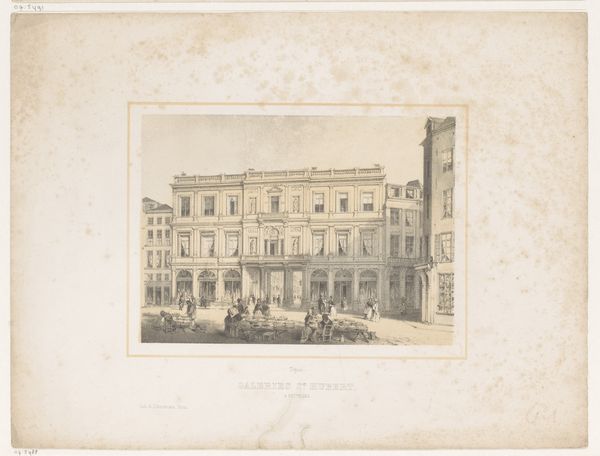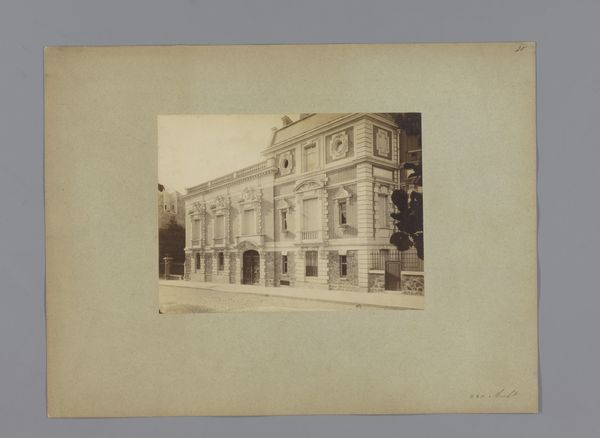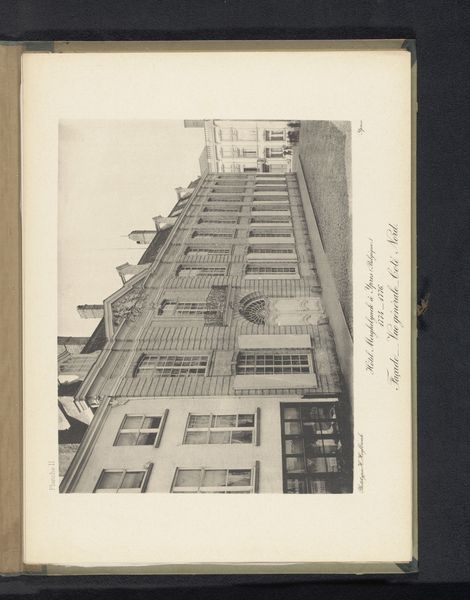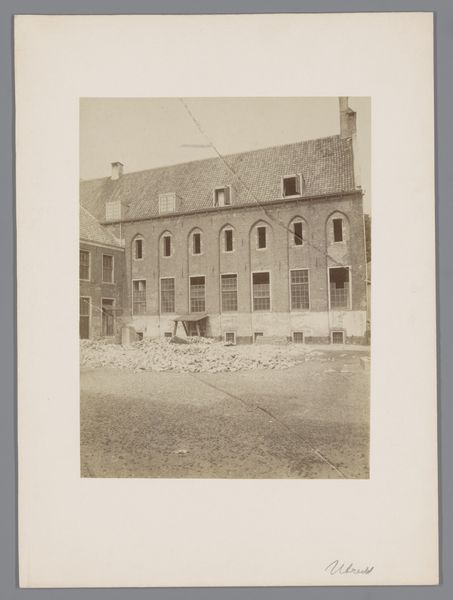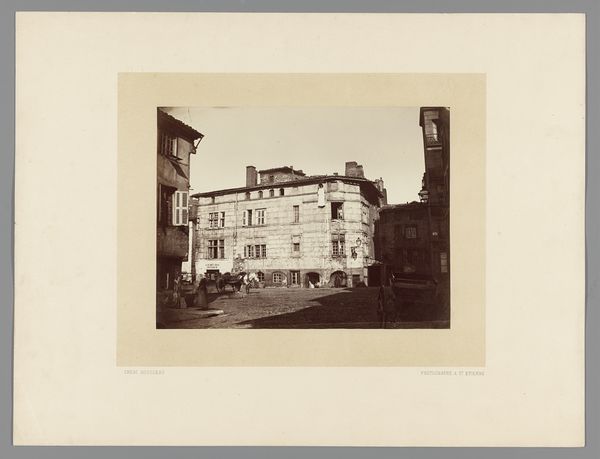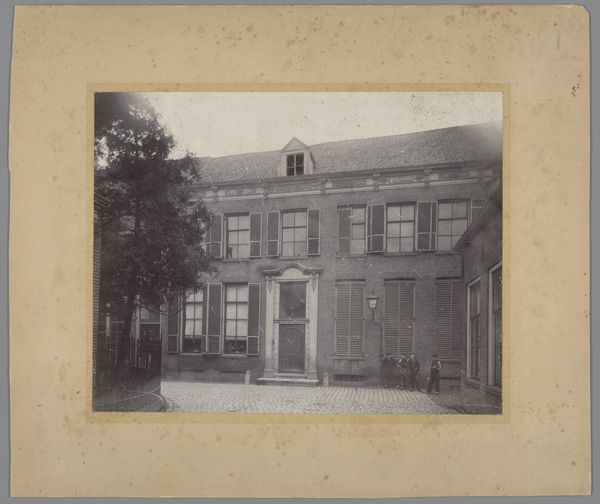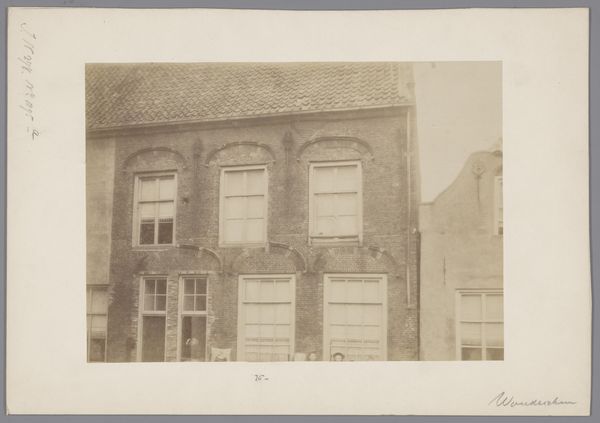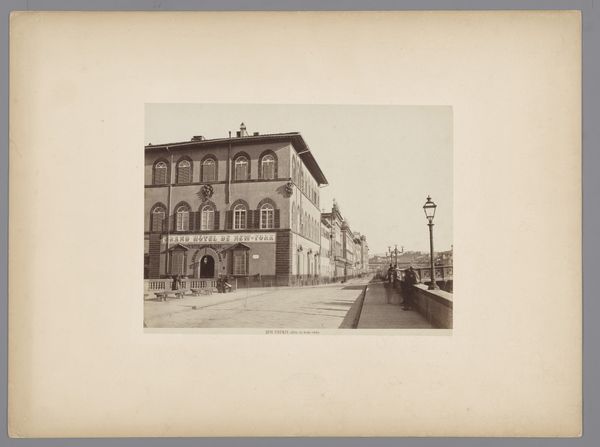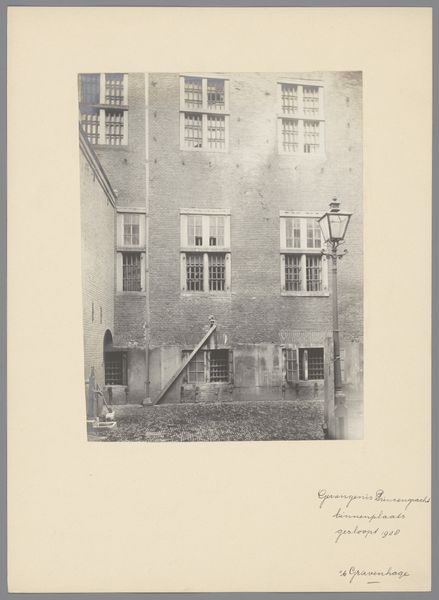
Dimensions: height 139 mm, width 230 mm
Copyright: Rijks Museum: Open Domain
Editor: This is "Gezicht op het voormalige Agnietenklooster te Utrecht," a 1902 photograph capturing the former Agnieten Convent in Utrecht, taken by an anonymous photographer. The image evokes a sense of melancholy and stillness. It seems to be pregnant with absences, perhaps loss, and makes me wonder about the space, now changed, and the people who were once there. What sort of stories might be layered into those stones? Curator: Indeed. Consider how the Agnieten Convent, an enclosed space for women dedicated to spiritual pursuits, carries its weight through symbols of both containment and aspiration. Notice the high, arched windows that punctuate the facade. In visual language, the pointed arch often symbolized reaching towards the divine. What does it signify here in a post-convent context, a space after its intended purpose? Editor: That's interesting. I hadn't thought about the symbolism of the arches in relation to its former function as a convent. Is it about unfulfilled promise? Curator: Perhaps not unfulfilled, but certainly transformed. A convent’s primary function revolved around safeguarding spiritual dedication. After the convent's dissolution, the image, preserved through photography, subtly conveys an inherent tension, doesn’t it? Between sacred past and secular present. Editor: It does now that you point it out. This space between meanings adds to that initial sense of melancholic stillness I sensed at first. What does that tell us about collective cultural memory? Curator: It suggests memory persists, but its significance changes. While the physical structure of the building serves as an index, photography also memorializes a different kind of index; a psychological record about loss, transition, adaptation. Each viewer filters such representations differently through their own cultural framework. What symbols or memories are awakened in *you* when seeing an abandoned sacred space, and why? Editor: I see a story of resilience and change, even loss. The building still stands, even if its purpose has shifted, and it teaches me something new, still, even today. Curator: Precisely! It shows how architecture, immortalized through photographs, becomes an evolving artifact carrying cultural and spiritual significance beyond its original function. Thank you for bringing fresh insight to it.
Comments
No comments
Be the first to comment and join the conversation on the ultimate creative platform.
